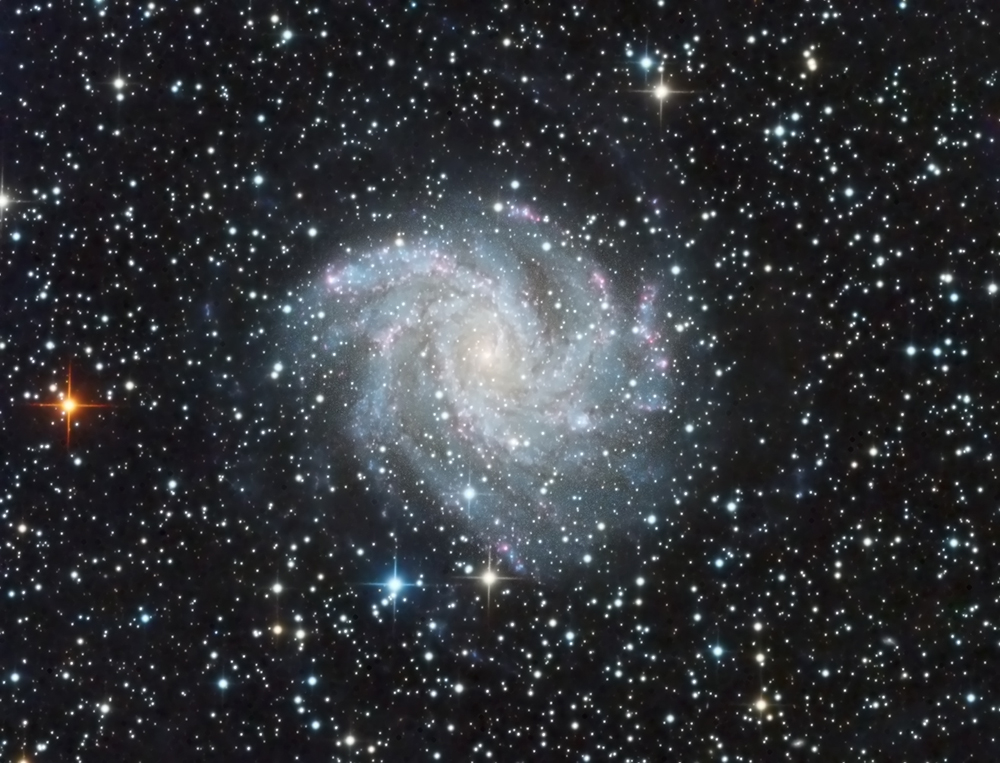
|
From Wikipedia, the free encyclopedia "NGC 6946 is a face-on intermediate spiral galaxy with a small bright nucleus whose location in the sky straddles the boundary between the northern constellations of Cepheus and Cygnus. Its distance from Earth is about 22.5 million light-years. Discovered by William Herschel on 9 September 1798, this well-studied galaxy has a diameter of approximately 40,000 light-years, about one-third of the Milky Way's size, and it contains roughly half the number of stars as the Milky Way. The galaxy is heavily obscured by interstellar matter as it lies quite close to the galactic plane of the Milky Way. Ten supernovae have been observed in NGC 6946 in the last century. For this reason NGC 6946 in 2005 was dubbed the Fireworks Galaxy, a name becoming increasingly popular."
|
 |
| Click on image for Higher Resolution |
|
Date : September and October 2016 Equipment used :
Exposure Detail : SynLRGB combine Total hours 4
|
This Web Page was Built with PageBreeze Free HTML Editor